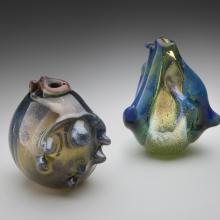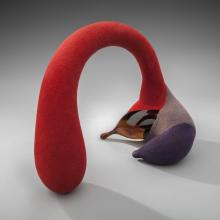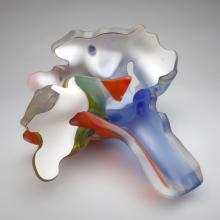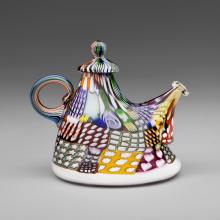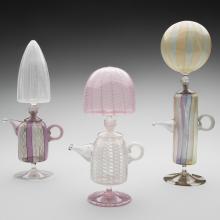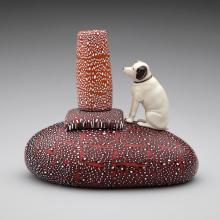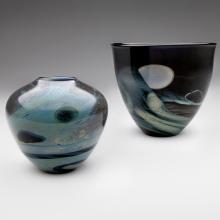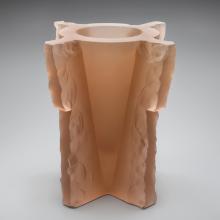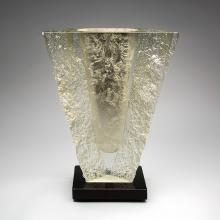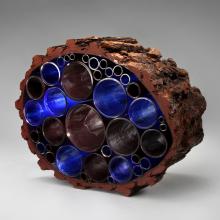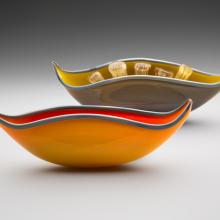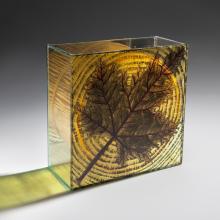Studio Glass: The art of Marvin Lipofsky, Richard Marquis, John Lewis, and Elin Christopherson
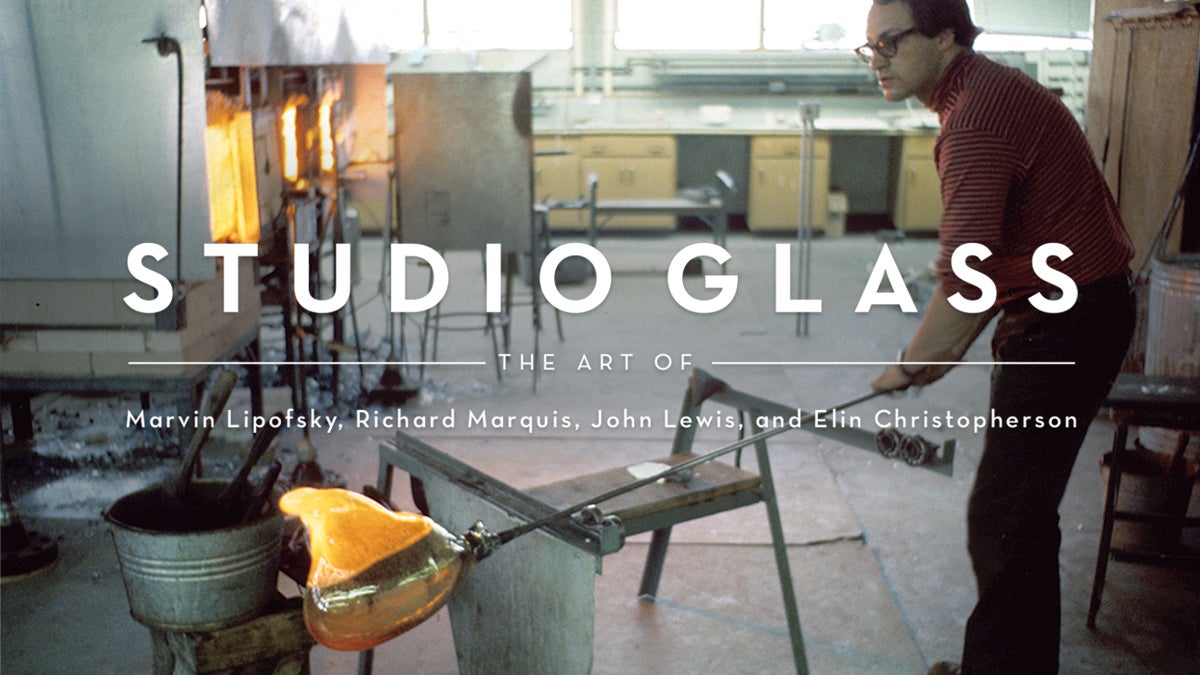
Studio Glass: The art of Marvin Lipofsky, Richard Marquis, John Lewis, and Elin Christopherson
Glass, although rooted in ancient Mesopotamia and historically used in a variety of decorative arts, is a relative newcomer to the world of fine art. Certainly there were ceramicists and production workers experimenting with glass in the early to mid-twentieth century, but the beginning of the studio glass movement is attributed to an event in 1962—when University of Wisconsin ceramics professor Harvey Littleton, glass researcher Dominick Labino, retired Libbey Glassworks blower Harvey Leafgreen, and seven student participants custom-built a brick furnace and, using #475 glass marbles from the Johns-Manville company, blew a glass bubble at a workshop in Toledo, Ohio.
Marvin Lipofsky, a star student in Harvey Littleton’s first glass course, took up his instructor’s call to explore the material in new ways. He brought studio glass west, developing pivotal glass programs at the University of California, Berkeley, and the California College of Arts and Crafts in Oakland in the years immediately following the Toledo workshops. Lipofsky’s non-objective vessels helped transform the perception of glass as a material for craft or production into a medium for fine art. His ongoing exploration of its sculptural potential has been conducted in factories and hot shops around the world and at the artist’s Berkeley studio, where his mold blown organic forms are sandblasted, carved, and polished.
Richard (Dick) Marquis was one of Lipofsky’s first students at U. C. Berkeley, coming of age during the exhilarating and experimental years of the school’s decorative arts department in the 1960s. Marquis’ work is characteristically humorous, anti-intellectual, and obsessively made. An astonishing range of masterfully blown vessels, some of which are combined with found objects, reflect the artist’s deep knowledge of historical references and traditional Venetian glass techniques, such as murrine and zanfirico.
Shortly after John Lewis’ introduction to glass in Lipofsky’s course at U. C. Berkeley in 1968, the artist found himself impatient to pursue his vision for the material and established one of California’s first private hot glass studios in West Oakland. In 1980, Lewis designed an experimental furnace specifically for casting. Lewis’ ability to melt and pour glass into a variety of molds and his novel use of centrifugal casting has resulted in a range of sculptures and bowls that he combines with glass frit, copper foil, and gold leaf for a brilliant interplay of color and texture.
Elin Christopherson began incorporating steel and wood in her glass art while completing various assignments for instructor Marvin Lipofsky at the California College of Arts and Crafts in 1984. Much of Christopherson’s work is composed of salvaged material, sometimes from landfill, and is concerned with the interdependence of humanity and the natural world. The artist frequently uses botanical references, such as blossoming tips and pod-like forms, to provide a glimpse of an object’s otherwise hidden interior.
Marvin Lipofsky, Dick Marquis, John Lewis, and Elin Christopherson have committed their careers to exploring the boundaries and testing the limits of glass. While no single presentation can encompass the extraordinary breadth of work produced during the five-decade history of studio glassmaking, this exhibition highlights four unique and evolving approaches to the art form. These artists continue to pursue their respective visions for glass and all its possibilities, and their work represents the perpetual growth of the studio glass movement.
© 2014 by the San Francisco Airport Commission. All Rights Reserved.
